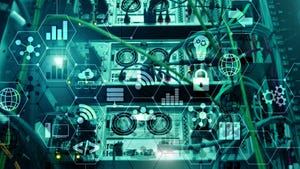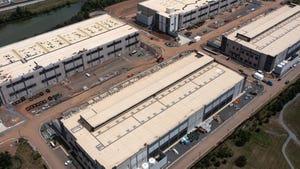
Insight and analysis on the data center space from industry thought leaders.
Grid Interactive UPS Systems and the Race to Carbon-NeutralityGrid Interactive UPS Systems and the Race to Carbon-Neutrality
Looking to make strides toward becoming carbon-neutral? Maybe it’s time to consider recent innovations in grid-interactive UPSs and lithium-ion batteries.

Sponsored Content
Data centers have a major role to play in today’s shifting energy landscape, and there have been many conversations within industry circles about various ways organizations can be sustainable, lower energy costs, and even generate revenue. Innovations in uninterruptible power supply (UPS) systems and batteries – especially lithium-ion batteries – present relevant, practical options for data center organizations wrestling with immediate energy consumption and efficiency challenges.
Data centers rely on UPS systems and batteries for power conditioning and backup power. The energy stored in those batteries goes unused most of the time and has long been seen as a way to potentially reduce electricity costs – or even generate revenue. The proliferation of lithium-ion batteries and the introduction of grid-interactive (or grid-connected) UPS systems are making that sort of energy management not just possible, but widely accessible.
Grid interactive UPS systems can operate within a micro grid and return power back to the grid. This technology allows the energy stored in an organization’s UPS batteries to be sold back to the utility during off-peak hours, providing grid balancing services to the utility provider and generating revenue for the data center organization. And it can do it without compromising the IT resiliency of your critical infrastructure.
These grid-interactive UPS systems leverage the benefits of lithium-ion batteries, specifically the longer run times, quicker charge and discharge, and higher cycling capabilities. A grid-interactive UPS with lithium-ion batteries can easily provide a fast-enough response to meet the needs for frequency containment, support a variety of income-generating services, and allow cost savings opportunities through demand management. For example, an organization can turn off the grid and use the battery during peak hours to avoid paying heavy spot rates and help the utility provider manage peak demand.
It's not a stretch to say a grid-interactive UPS system with lithium-ion batteries can even contribute to decarbonization and a more sustainable energy strategy. We’re still in the early days of these technologies, but they are certain to be important tools in the data center industry’s ongoing efforts to manage energy consumption and carbon emissions.
Rob discussed these topics and more during his recent podcast appearance. You can listen to the full conversation here.
About the Authors
You May Also Like







